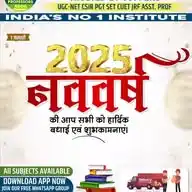
UGC NET JRF notes Professor Adda Institute
June 13, 2025 at 03:01 AM
Here is Model 3: Berlo’s SMCR Model of Communication JRF topic 🔥
*Like a, Lecture Based Explanation: Berlo’s SMCR Model (1960)* ProfessorsAdda
🧑🏫 A Classroom Lesson in Communication...
In the early 1960s, a young communication scholar named David Berlo stood before his class and asked a simple question:
> “Why do some people deliver messages effectively, while others don’t—even when they say the same thing?”
The students murmured different answers. Then Berlo smiled and picked up the chalk.
> “Communication is more than just speaking. It depends on four powerful parts,” he said, and wrote on the board:
S – Source
M – Message
C – Channel
R – Receiver
> “That’s my SMCR model,” he explained.
🧩 What Each Part Means:
1️⃣ S – Source (Sender)
The communicator who starts the message. But not just anyone can be a good source.
They need:
Communication Skills (How well they speak/write)
Attitude (Interest in topic & audience)
Knowledge (About subject)
Social System (Cultural background)
Culture (Values & beliefs)
> “A teacher with weak knowledge or bad attitude can’t teach well—even if they talk a lot,” said Berlo.
---
2️⃣ M – Message
What the sender wants to say.
It has:
Content (Idea)
Elements (Words, gestures, symbols)
Structure (Logical flow)
Code (Language or symbols used)
Treatment (Style of delivery)
> “The same message in a funny tone or serious tone can feel totally different,” Berlo warned.
---
3️⃣ C – Channel
The five senses we use to send/receive messages:
👂 Hearing | 👁️ Seeing | 👃 Smelling | 👄 Tasting | ✋ Touching
But mainly: Hearing, seeing, touching
> “In face-to-face class, students learn through words, gestures, facial expressions—multiple channels!”
---
4️⃣ R – Receiver
Just like the Source, the Receiver must also have:
Good communication skills
Attitude
Knowledge
Cultural understanding
> “If the student doesn’t understand the language or lacks interest,” Berlo concluded, “even the best teacher fails.”
---
🎓 Moral of the Story:
Effective communication happens only when both Sender and Receiver have shared understanding, skills, and attitudes.
---
📚 UGC NET Exam Facts – Berlo’s SMCR Model
Feature Details
Full Form Source – Message – Channel – Receiver
Thinker David K. Berlo
Year 1960
Type of Model Linear (No feedback)
Focus Importance of communication skills, attitude, and knowledge in both sender and receiver
Special Feature Highlights 5 senses (channels) in communication
Feedback? ❌ No (Linear only)
Noise included? ❌ Not considered
Used in? Interpersonal, educational, and mass communication
---
🔍 Common MCQs for UGC NET
1. Who proposed the SMCR model of communication?
→ David K. Berlo
2. In Berlo’s model, what do S, M, C, R stand for?
→ Source, Message, Channel, Receiver
3. Which model focuses on communication skills and cultural background of the sender?
→ Berlo’s SMCR Model
4. Is feedback included in SMCR model?
→ No, it is a linear model.
5. Berlo’s model emphasizes which sensory channels?
→ Hearing, seeing, touching (5 senses)
As per NEW trend
Don't miss NEW notes
Click to know *more*
👇👇👇
👉 *Do message here English Medium Students*
wa.me/+919216009964?text=Send_me_notes_my_subject_is
👉 *हिंदी माध्यम स्टूडेंट्स यहाँ msg करे*
wa.me/+919257007505?text=Send_me_notes_my_subject_विषय_है
Click above for your STUDY PACKAGE. 👆🏻👆🏻
Helpline No -- 7690022111 / 9216228788
❤️
3